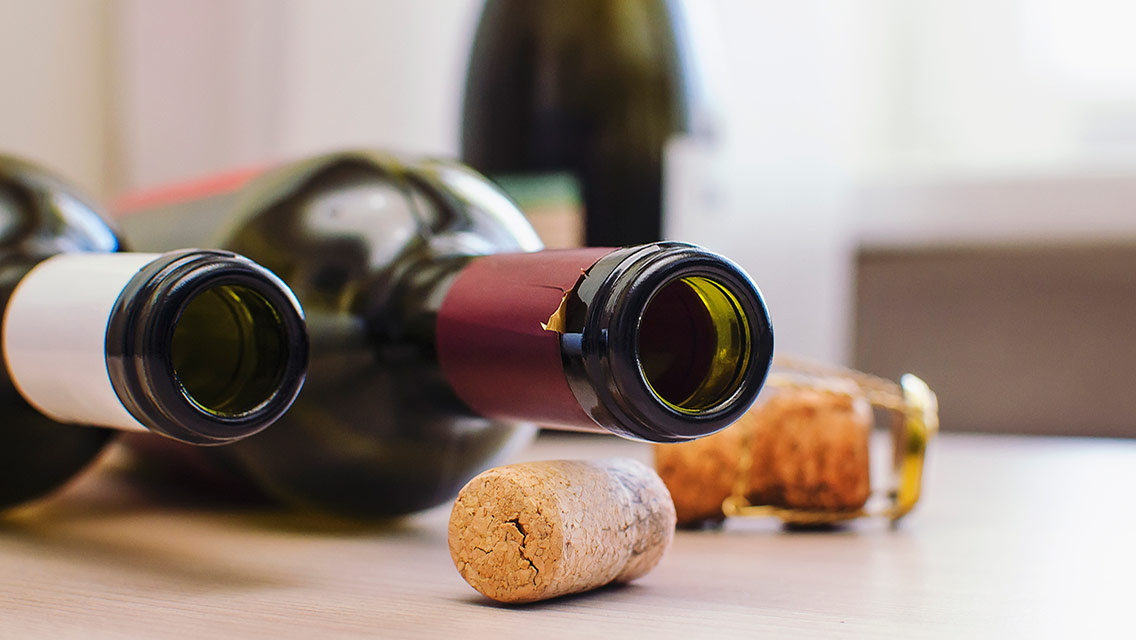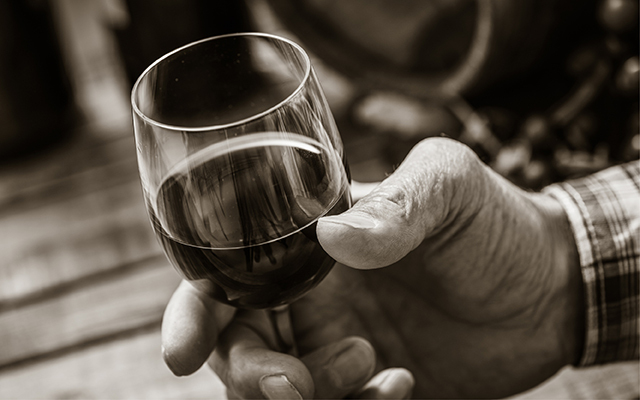My dad spent his working hours schlepping kegs and cases of Grain Belt beer to drinking establishments all over the city of St. Paul, so one of the most enduring memories of my 1950s childhood was watching him nurse a cold one at the kitchen table when he arrived home from work. Sweat-stained, puffing on a Marlboro, he presented a classic portrait of working-class leisure. When he was feeling particularly charitable, he’d even offer me a sip of his bitter brew.
It wouldn’t be quite fair to blame those childhood samples — or the ever-present case of Grain Belt in the basement — for the alcohol-fueled misadventures that peppered my adolescence and gradually evolved into a slightly less reckless relationship with adult beverages in the decades that followed. Dad rarely drank to excess (Mom was a teetotaler), and he generally seemed to associate drinking with pure relaxation — a small luxury, fairly earned. It took me quite a while to find that balance.
Six-packs took up a regular residency in my fridge as I navigated from early adulthood into middle age, when the first whiff of middle-class affluence sparked a nascent appreciation for a glass or two of wine with dinner. Soon enough, it was a glass or two before dinner as well as one afterward. All in moderation, of course. No drunken revelry.
That pattern continued until about six months ago, when My Lovely Wife and I agreed to limit our wine appreciation to those occasions when we visit one of our local bistros — a weekly treat. No wine in the house. It’s a decision that seems more prescient in light of recent research showing a dramatic spike in alcohol abuse among American seniors.
As Paula Span reports in the New York Times, nearly 180,000 alcohol-related deaths occurred from 2020 to 2021 in the United States, and seniors accounted for 38 percent of those fatalities. It’s the continuation of a troubling trend: Deaths involving alcohol among people over 55 rose by 237 percent between 1999 and 2020.
Researchers have also found that seniors are binge drinking (four or more drinks on a single occasion) more frequently than in the past — nearly 40 percent more often than they were 10 or 15 years ago.
Those numbers are partly due to a rapidly aging population, but researchers have also found that seniors are binge drinking (four or more drinks on a single occasion) more frequently than in the past — nearly 40 percent more often than they were 10 or 15 years ago. “Alcohol is a social lubricant when used within the guidelines, but I don’t think [Americans] realize that as the dose increases it becomes a toxin,” George Koob, PhD, director of the National Institute on Alcohol Abuse and Alcoholism, tells Span. “And the older population is even less likely to recognize that.”
Interestingly, it’s older women who are fueling this trend, according to Stanford University addiction researcher Keith Humphreys, PhD. Between 1997 and 2014, the percentage of older women drinkers climbed at an annual rate more than double that of men; binge drinking among older men was stable during the same period while among older women it increased by 3.7 percent per year.
Humphreys points to the unprecedented influx of Boomer women into college and the workforce in years past to help explain the trend. Social drinking was common in these environments, and they earned sufficient disposable income to support the activity. “Contrary to stereotypes, upper-middle-class, educated people have higher rates of drinking,” he notes. “The women retiring now are more likely to drink than their mothers and grandmothers.”
And though alcohol affects older women more profoundly than it does their male counterparts (they host fewer of the enzymes required to metabolize it), seniors in general often overlook how the body’s response to booze changes as they age. “Equivalent amounts of alcohol have much more disastrous consequences for older adults,” explains University of Pennsylvania psychiatrist David Oslin, MD. “It causes slower thinking, slower reaction time, and less cognitive capacity when you’re older.”
The World Health Organization and its International Agency for Research on Cancer last November issued a joint statement declaring that “No safe amount of alcohol consumption for cancers can be established.”
It can also interact in harmful ways with various medications seniors commonly take, he adds, while contributing to a number of chronic diseases and some types of cancer. The World Health Organization and its International Agency for Research on Cancer last November issued a joint statement declaring that “No safe amount of alcohol consumption for cancers can be established.” Research on these dangers has become so well-established in recent years, in fact, that some countries are pushing hard for stronger warning labels on alcoholic beverages.
Lawmakers in Ireland last year approved a bill mandating more prominent health alerts on all alcoholic beverages sold in that country, the Times reports. Beginning in 2026, consumers hoisting a can of Guinness, for example, will be reminded of the health risks with one of two rather bold messages: THERE IS A DIRECT LINK BETWEEN ALCOHOL AND FATAL CANCERS or DRINKING ALCOHOL CAUSES LIVER DISEASE.
Similar initiatives are gaining traction in Canada, Thailand, South Korea, and Norway despite fierce opposition from alcohol purveyors. U.S. regulators planted a vague warning label on these types of beverages back in 1989, but there’s been no perceptible movement toward a more visible — or fervent — approach in the years since.
Some experts recommend raising the federal tax on alcohol, arguing that it would curb demand in much the same way a tax hike has contributed to declining tobacco sales. Meanwhile, others point to obstacles seniors face when trying to cut back on their consumption.
Health insurers are required by law to provide the same levels of coverage for substance-abuse disorders as they do for other illnesses, but that mandate has never been extended to Medicare. It’s a missed opportunity for millions of seniors, Oslin argues, because “age is actually the best predictor of a positive response.”
And it’s not about giving up the occasional highball, he adds. “Treatment doesn’t necessarily mean you have to become abstinent. We work with people to moderate their drinking.”
That approach seems to be working pretty well for MLW and me. We haven’t really missed the pre- and post-dinner wine worship; a cup of tea now eases each of us into the evening hours. And, though I’m no working-class hero like my dad back in the day, I often enjoy a cold beer when I get home from the office — a small luxury, fairly earned.





This Post Has 0 Comments